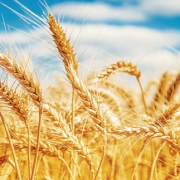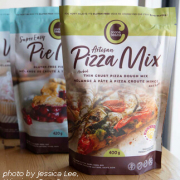GFCO Study Provides Industry Guidance in the Use of Visual Examination to Determine the Safety of Oats and other Grains
“The Gluten Intolerance Group’s Gluten Free Certification Organization (GFCO) has published a study titled “The Use of Visual Examination for Determining the Presence of Gluten-Containing Grains in Gluten Free Oats and Other Grains, Seeds, Beans, Pulses and Legumes” in a special section of the Journal of AOAC International, focusing on food allergens and gluten.
- By Laura Allred, Food Safety Matters [1]

While oats are a cereal grain with a very high risk of contamination from gluten-containing grains (GCGs), it is now generally accepted that pure oats uncontaminated with GCGs can be safe for persons who have celiac disease. [2] For this reason, many oat suppliers now make gluten-free labeling claims based on their ability to control GCG cross-contamination.
The purpose of the GFCO study was to identify and provide industry guidance in determining the safety of oats and other whole grains for the gluten-free market.
The use of visual examination to determine if oats and other whole grains are gluten-free avoids many of the problems encountered with antibody-based testing methods, including sampling limitations and the uneven distribution of gluten in ground flours.
The study describes a visual examination sampling plan for determining the number of GCGs per kilogram of whole commodities, as well as a proposed threshold for meeting the GFCO requirement of 10 ppm or less.
The proposed threshold set by GFCO takes into account the special circumstance of whole grain products, wherein a GCG in a product like oatmeal may be eaten in one serving, rather than being spread out over the entire product package or lot.
The GFCO study determined that a threshold of 0.25 gluten-containing grains per kilogram of whole grains sold as specially processed gluten-free product met GFCO’s 10 ppm standard.
Prior to GFCO’s study, the industry interpreted GFCO’s 10 ppm standard in different ways when applied to whole commodities.
The new gluten threshold and sampling plan outlined in the study provides valuable guidance to processors and enhances the safety of whole grain products certified by GFCO for consumers.
The study also reports that two major processors of gluten free oats were able to meet the proposed threshold using their current processing methods, which differ from one another. However, it is important to note that this study was not designed to compare the performance of the two processors in meeting the threshold, and the data in the study cannot be used to compare processing methods.
The threshold and sampling plan provided in the study will help consumers of GFCO-certified products by enhancing the safety of whole grain foods.
Laura Allred is the regulatory and standards manager for the nonprofit Gluten Intolerance Group. Allred’s experience includes a background in immunology and eight years of directing a food testing laboratory and test kit manufacturing operation.
- www.gluten.org/wp-content/uploads/2017/12/Oat-Study.pdf.
- https://www.celiac.ca/oats-statement/
Read the original article at https://www.foodsafetymagazine.com/enewsletter/study-provides-industry-guidance-in-determining-the-safety-of-oats-and-other-grains/













